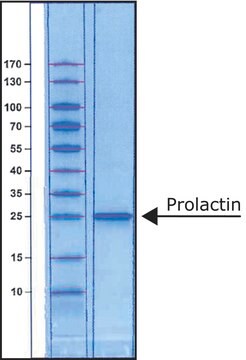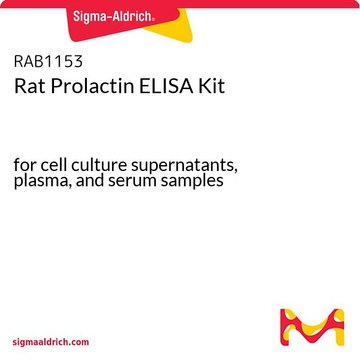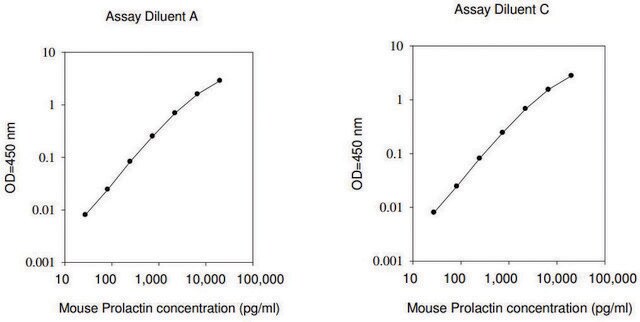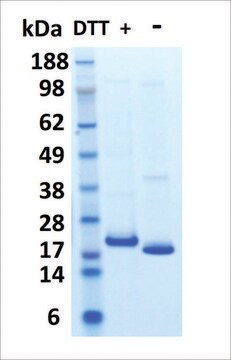SRP9000
Prolactin human
human, recombinant, expressed in HEK 293 cells
Sinónimos:
PRL
About This Item
Productos recomendados
origen biológico
human
Nivel de calidad
recombinante
expressed in HEK 293 cells
esterilidad
non-sterile
Ensayo
≥95% (SDS-PAGE)
Formulario
liquid
potencia
≤2 ng/mL Nb2-11 cells proliferation EC50
caducidad
2 yr
mol peso
23 kDa
técnicas
cell culture | mammalian: suitable
impurezas
≤1 EU/μg protein Endotoxin level
temp. de almacenamiento
−20°C
Información sobre el gen
human ... prl(5617)
Descripción general
Prolactin (PRL) is a multifunctional polypeptide hormone primarily produced by the lactotrophic cells of the anterior pituitary gland in vertebrates.
Aplicación
- in in vitro experiments to examine its effects in sleep-like concentrations on T-cell migration
- to study its effects on claudin 2 (CLDN2) expression in the Caco-2 intestinal epithelial cell model
- in microplate assays to demonstrate the specificity of the antibodies for vasoinhibin
Acciones bioquímicas o fisiológicas
Forma física
Nota de preparación
Palabra de señalización
Danger
Frases de peligro
Consejos de prudencia
Clasificaciones de peligro
Repr. 1B
Código de clase de almacenamiento
6.1C - Combustible acute toxic Cat.3 / toxic compounds or compounds which causing chronic effects
Clase de riesgo para el agua (WGK)
WGK 3
Punto de inflamabilidad (°F)
Not applicable
Punto de inflamabilidad (°C)
Not applicable
Elija entre una de las versiones más recientes:
Certificados de análisis (COA)
¿No ve la versión correcta?
Si necesita una versión concreta, puede buscar un certificado específico por el número de lote.
¿Ya tiene este producto?
Encuentre la documentación para los productos que ha comprado recientemente en la Biblioteca de documentos.
Nuestro equipo de científicos tiene experiencia en todas las áreas de investigación: Ciencias de la vida, Ciencia de los materiales, Síntesis química, Cromatografía, Analítica y muchas otras.
Póngase en contacto con el Servicio técnico









